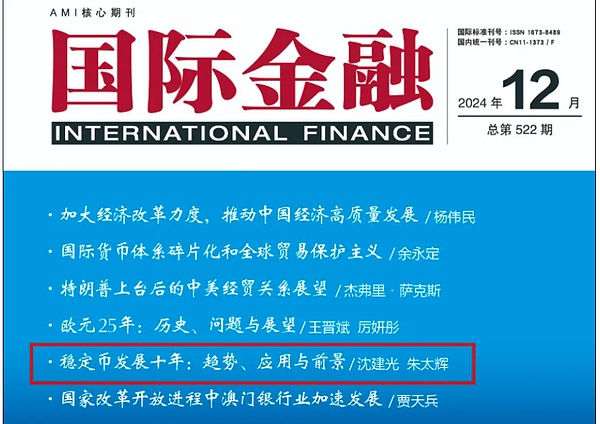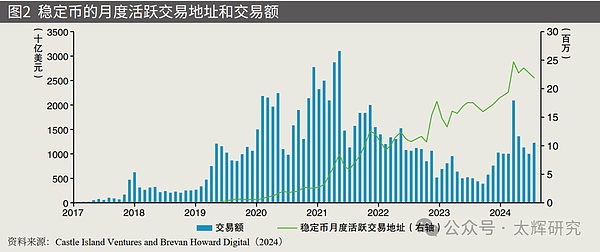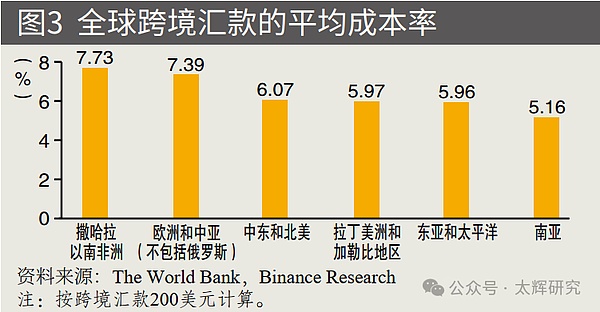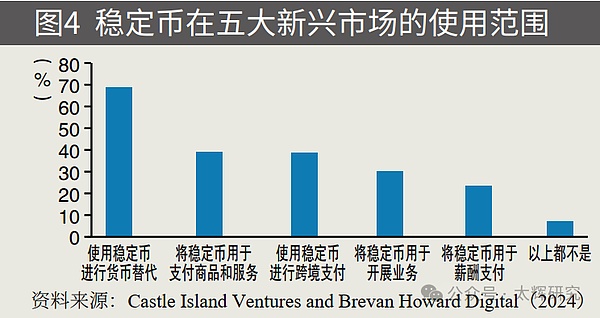How Arweave works and why it exists
Arweave, Arweave's working principle and significance of existence Golden Finance, this article briefly introduces Arweave's working principle and value.
 JinseFinance
JinseFinance
【Introduction】
As of 2024, stablecoins have been developed for 10 years, during which they have withstood multiple risk shocks and trust adjustments. Since the second half of 2023, they have entered a fast-track of development again, attracting widespread attention from the industry, policy and academia.
From the perspective of development trends, stablecoins have demonstrated good resilience and gained increasing market recognition, while showing obvious oligopolistic characteristics. The market capitalization share of the first two stablecoins exceeds 90%, and the market capitalization share of the US dollar stablecoin exceeds 95%, and they are showing a trend of integration and development with traditional financial institutions;
From the perspective of application scenarios, stablecoins were initially mainly used for the transaction of encrypted assets, but in recent years, their applications in conventional financial activities such as cross-border payments and foreign exchange savings, and in new financial activities such as decentralized finance (DeFi) have been rapidly expanding;
From the perspective of development prospects, the future development space of stablecoins depends on whether the risk of redemption runs can be resolved in risk management, whether the market competition between the central bank's digital currency and the digital currency bridge can be handled in the development model, and whether the increasingly stringent access and compliance policy requirements can be responded to in financial supervision.

Source: Shen Jianguang and Zhu Taihui: "Ten Years of Stablecoin Development: Trends, Applications and Prospects", "International Finance", Issue 12, 2024, pp. 68-73.
Stablecoins are digital currencies (such as USDT, USDC, DAI, etc.) issued by the private sector based on assets such as legal tender. Currently, more than 95% of them are stablecoins based on the US dollar; there are also stablecoins based on digital assets or collateral (such as DAI, etc.), and stablecoins based on physical assets such as gold and silver (such as PAXG, etc.); in addition, there are a few algorithm-based uncollateralized stablecoins (such as FRAX, etc.).
Since the launch of the first stablecoin (USDT) in 2014, the development of stablecoins has withstood multiple risk shocks and has entered a rapid development track again since the second half of 2023. As of November 2024, the total market value has approached 200 billion US dollars. Coupled with the rapid development of Web3.0, the development trend, application scope and future prospects of stablecoins have once again attracted widespread attention from all walks of life.
Stablecoins are issued based on blockchain technology, and their functional characteristics have better balanced openness and stability. Specifically, stablecoins are very open, support controllable anonymity, can be traded directly peer-to-peer, and naturally have cross-border attributes; at the same time, unlike "native" cryptocurrencies such as Bitcoin, stablecoins are anchored to traditional legal currencies such as the US dollar and the euro, or to real assets such as gold, and their value is relatively stable.
Stablecoins are the bridge between central bank digital currencies (digitalization of legal currencies) and digital assets (algorithm-based tokens).
In the field of digital assets (crypto assets), liquidity has a distinct pyramid structure: at the top are stablecoins anchored to legal currencies, followed by Bitcoin and Ethereum, then ERC20-type crypto assets and native tokens of other blockchains, and at the bottom are NFTs (non-homogeneous tokens) (Zou Chuanwei et al., 2023).
As of November 2023, the total market value of digital assets has exceeded US$3.27 trillion. In most cases, digital assets can only gain real purchasing power after being converted into legal currencies.
Stablecoins, especially USD stablecoins, are accounting units, payment media and value storage tools in the digital asset and crypto asset markets. Their trading volume has long exceeded the sum of the two largest crypto assets, Bitcoin and Ethereum.
01 Development trend of stablecoins
(I) From the perspective of total volume, stablecoins have resumed rapid growth after suffering shocks
From 2017 to 2021, three major factors have driven the rapid growth of the stablecoin market. USDT and USDC are the two largest stablecoins in the world, accounting for about 90% of the stablecoin market. The trends of the two basically represent the trends of the entire stablecoin market.
Before 2017, the market value of USDT was always below 7 million US dollars. However, since 2017, thanks to the bull market of digital assets, Tether's simultaneous listing on three major exchanges, and China's strict prohibition of virtual token issuance, USDT has grown in volume, reaching nearly 1.4 billion US dollars at the end of 2017, and has maintained rapid growth for nearly 5 years. From its launch to May 2022, USDC's growth trend is similar to that of USDT.

The collapse of UST has caused the stablecoin market to experience a correction for about a year.
In the first half of May 2022, the value of TerraUSD (UST), the world's third largest stablecoin, fell from $1 to a minimum of $0.04 in 5 days, causing a huge impact on the entire stablecoin market.
The market value of USDT fell from $83 billion to $65.8 billion in mid-July 2022, and did not return to $83 billion until May 2023.
The market value of USDC fell from about $55 billion in May and June 2022 to about $45 billion at the end of 2022; in March 2023, it suffered the impact of the Silicon Valley Bank explosion and the regulatory decoupling investigation (at that time, USDC's reserve funds were deposited in Silicon Valley Bank), and by December 2023, the market value further fell to about $25 billion.
Starting from the second half of 2023, stablecoins gradually resumed rapid growth.
With the fading of risk shocks and the improvement of stablecoin transparency, the stablecoin market has re-entered a rapid growth track in the second half of 2023, especially since November.
As of November 24, 2024, the total market value of stablecoins has reached nearly US$200 billion, of which USDT's market value has exceeded US$130 billion, more than 1.5 times before the decline in May 2022; USDC's market value has exceeded US$39 billion, which is still some distance from the high of US$56 billion in May and June 2022.
(II) From a structural perspective, the stablecoin market presents obvious oligopoly characteristics
From the perspective of the main body, stablecoins issued by Tether and Circle account for about 90%. USDT was launched in November 2014, and USDC was launched in October 2018. They are the two largest stablecoins in the world, accounting for about 70% and 20% of the stablecoin market respectively. The trend of the two basically represents the trend of the entire stablecoin market.

From the perspective of currency, the US dollar stablecoin is the main channel for funds in and out of the crypto asset market. At present, stablecoins are mainly dominated by fiat stablecoins. Among them, the US dollar stablecoin, as the unit of account, payment medium and value storage tool in the crypto asset market, has long exceeded the sum of the two largest crypto assets-Bitcoin and Ethereum.
The two largest stablecoins, USDT and USDC, are both US dollar stablecoins. Together with other types of US dollar stablecoins, the supply of US dollar stablecoins accounts for more than 95%. In addition, these stablecoins are mainly issued on the Ethereum blockchain, and blockchains such as TRON are gaining more attention.
(III) From the perspective of the model, the cooperation between stablecoins and traditional financial institutions continues to expand
In terms of payment institutions, in 2020, PayPal, an American online payment company, has begun to support consumers to trade cryptocurrencies through PayPal and Venmo accounts, and launched the stablecoin PayPal USD pegged to the US dollar; in September 2024, it announced that merchants would be allowed to buy, hold and sell cryptocurrencies through their business accounts.
In October 2024, Stripe, an American online payment company, acquired the stablecoin platform Bridge for US$1.1 billion, which is the largest acquisition in the cryptocurrency field to date.
At the same time, Stripe resumed the service of crypto payments for American companies through the stablecoin USDC on Ethereum, Solana and Polygon.
In terms of financial institutions, in September 2024, Japan's three largest banks - Mitsubishi UFJ Financial Group (MUFG), Sumitomo Mitsui Banking Corporation (SMBC) and Mizuho Bank (Mizuho) jointly launched a cross-border payment system called "Project Pax": using stablecoins to replace intermediary banks in traditional cross-border payment models, thereby improving efficiency and reducing costs.
The project integrates SWIFT's payment information into the stablecoin system, and banks can use stablecoins for settlement, but corporate customers do not need to contact or understand the operation of stablecoins.
In terms of asset allocation, in April 2023, a survey of 256 institutions around the world by EY-Parthenon (2023) showed that although some institutional investors are cautious about investing in cryptocurrencies and assets, more and more institutional investors are optimistic about the investment prospects in this field and will increase investment allocations: 25% of institutional investors will increase their holdings of cryptocurrencies, crypto assets and related products in 2022, 38% of institutional investors will increase their holdings in 2023, and 69% of institutional investors are expected to increase their holdings in 2024-2025, among which asset management companies and hedge funds are expected to increase their holdings the most (81% and 71% respectively).
02 Application scenarios of stablecoins
(I) The increasing activity of stablecoins in cross-border transaction settlements
After accumulating a large number of users and application scenarios in the crypto asset market, the US dollar stablecoin has been expanding into mainstream payment scenarios. Since 2022, the blockchain-based Binance Pay has seen a nearly fivefold increase in monthly active users and monthly transaction volume worldwide, reaching approximately 13.5 million users and approximately 1.96 million transactions.
Castle Island Ventures and Brevan Howard Digital (2024) estimates that in the 12 months before May 2024, the payment settlement volume of stablecoins reached about 2.5 trillion US dollars, which is 10 times the payment settlement volume in 2020; 20 million addresses on the chain actively trade stablecoins every month, and more than 120 million addresses hold non-zero stablecoin balances; the total stablecoin settlement amount in 2023 is conservatively estimated to be 3.7 trillion US dollars, reaching 2.62 trillion US dollars in the first half of 2024, and is expected to exceed 5.28 trillion US dollars for the whole year.

Stablecoins have obvious advantages in payment time and cost.
In terms of time, existing cross-border bank remittances usually take up to 5 working days to settle. Among them, digital payments based on the cross-border interbank communication system take more than one day to complete about 30% of remittances; 100% of cross-border payments based on blockchain are completed in less than 1 hour.
In terms of cost, according to data from the World Bank, the average cost rate of cross-border remittances under the traditional model was 6.35% in the first quarter of 2024, and some regions were still above 7%; but the average cost of sending stablecoins through high-performance blockchains such as Solana is about US$0.00025, and the cost of borderless peer-to-peer stablecoin transfers such as Binance Pay is even lower, charging a fee of US$1 when the transfer amount exceeds 140,000 USDT.
However, compared with bank account payments, stablecoin cross-border payments currently have obvious shortcomings in terms of payment capacity and stability (Binance Research, 2024).

(II) The real-world use scenarios of stablecoins are showing a diversified development trend
The use scenarios of stablecoins in the real world are constantly expanding.
In addition to the trading of digital assets/encrypted assets, in recent years, stablecoins have also been rapidly applied to currency substitution (to avoid large fluctuations or depreciation of local currencies), as a substitute for US dollar bank accounts (to avoid the impact of the lack of US dollar bank services), for inter-enterprise payments and consumer payments, for cross-border trade settlements and other financial investments and physical investments, etc.
In September 2024, with the support of Visa, Castle Island Ventures and Brevan Howard Digital (2024) conducted a survey on the use of stablecoins in five emerging markets, including Brazil, India, Indonesia, Nigeria and Turkey. The survey showed that the main purpose of using stablecoins is still to trade cryptocurrencies or NFTs, but other uses also account for a high proportion. 47% of the respondents said that one of the main purposes is to store funds in US dollars, 43% of the respondents said that it is to obtain a better currency exchange rate, and 39% of the respondents said that it is to earn income.
Stablecoins are gradually being integrated into the daily financial activities of the public. The use of stablecoins in emerging markets has gone beyond the scope of traditional crypto transactions.
Castle Island Ventures and Brevan Howard Digital (2024) conducted a survey on the frequency of use and user behavior of stablecoins in five countries. The survey not only quantified the popularity of stablecoins, but also revealed their wide application in currency substitution, cross-border payments and savings tools, and demonstrated the diversified development trend of stablecoins in emerging markets: 69% of respondents used stablecoins for currency substitution, 39% of respondents used stablecoins to pay for goods and services, 39% of respondents used stablecoins for cross-border payments, and another 20%~30% of respondents used stablecoins for salary payments and business operations.

(III) DeFi has experienced rapid development with the support of stablecoins
Since 2024, a large amount of capital has poured into decentralized finance (DeFi), and the total locked value (TVL) has increased from US$54.4 billion at the beginning of the year to US$94.1 billion, an increase of 72.8%.
At the same time, the number of deduplicated DeFi users in June 2024 also increased from 4.9 million at the beginning of the year to a new high of 8.9 million. Among them, almost all DeFi sub-industries have experienced significant growth, and it is no longer just decentralized exchanges (DEX) that drive growth. By June 2024, the total locked value (TVL) on the chain of decentralized lending reached 33.7 billion US dollars, an increase of 51.7% from the beginning of the year.
Compared with USDT, USDC has become the first choice for decentralized financial protocols due to its compliance, transparency and high stability.
Currently, major DeFi protocols such as MakerDAO, Compound, Aave, and Curve are the main supporters of USDC. USDC can be used as collateral for lending and trading, or as an asset in a liquidity pool to earn interest, etc. These developments have allowed USDC to go beyond a simple means of exchange or value storage.
03 The development prospects of stablecoins
The future development prospects of stablecoins will depend on whether they can effectively respond to the following three challenges.
(I) In terms of risk management, it is necessary to deal with the risks of customers being unable to redeem legal tender in full and losing their keys
From the perspective of issuance and operating models, legal tender deposits in bank accounts are protected by deposit insurance, and legal tender reserves of non-bank payment institutions are centrally deposited in the central bank, enjoying stable interest income from excess deposit reserves, without the risk of misappropriation or loss.
However, at present, investments in stablecoin advances lack clear investment products and risk requirements. Once an investment suffers a loss, the stablecoins issued at a 1:1 ratio with legal tender reserves will face the risk of concentrated "bank runs" and the inability to redeem in full at a 1:1 ratio.

At the same time, in a stablecoin wallet, only those who hold the private key can sign transactions and authorize asset transfers, but the key of a stablecoin is a long string of characters that is difficult for users to memorize and very easy to lose. Once lost, it means that the user will lose control of the stablecoin in the wallet; at the same time, the distributed nature of stablecoins means that there is no central agency that can help users retrieve their private keys or restore their wallet access.
In contrast, bank accounts and non-bank payment accounts have strong customer information registration and KYC (Know Your Custom) requirements, coupled with a centralized account management mechanism, if a user's account password is lost, the password can be retrieved with the assistance of a centralized management agency.
(II) In terms of development model, it is necessary to properly handle the payment competition between central bank digital currency and digital currency bridge
The advantages of stablecoins in cross-border payment settlement are real-time payment settlement and low payment costs, but their carrying capacity and stability in cross-border use are poor. The combined development of "central bank digital currency + multilateral digital currency bridge" will greatly improve the existing cross-border payment system and bring competitive impact to the application and promotion of stablecoins in cross-border payments.
At present, various countries are actively exploring the development of central bank digital currency. At the same time, BIS is working with multiple countries to build a "multilateral digital currency bridge": a multilateral cross-border payment platform based on distributed ledger technology, all participants use a synchronized, real-time updated ledger; using a single system architecture (Single System Model), central banks and commercial banks in participating countries and regions can directly access the platform.
According to the survey statistics of BIS (2024), countries and regions are actively testing central bank digital currencies at the wholesale and retail ends, and the number of countries and regions exploring experiments has reached about 100; at the same time, the "Multilateral Digital Currency Bridge" has entered the minimum viable product stage, and can also realize cross-border point-to-point payment and synchronous settlement. As of October 2024, more than 30 central banks of countries and regions have been following up.

The "Multilateral Currency Bridge" platform conducts cross-border payments. The two parties to the transaction do not need to keep separate accounts. Cross-border transactions can achieve synchronous settlement. At the same time, it can also be applied to cross-border transfers of dual currencies (cross-border foreign exchange transactions) to achieve synchronous settlement of foreign exchange transactions (PvP).
Compared with the traditional cross-border payment model, the "Multilateral Currency Bridge" has the function of "point-to-point" payment. Thanks to the use of distributed ledger technology, banks on the platform can achieve "payment and settlement" without opening accounts with each other or with third-party institutions, and realize the simultaneous delivery and collection (PvP) of foreign exchange transactions. The whole process is completed in real time, which greatly improves the efficiency of payment and settlement.
At the same time, the "Multilateral Currency Bridge" uses modular construction, separates and modularizes different functions, improves the scalability of the platform, and participating countries and regions can join the "Multilateral Currency Bridge" without establishing a local CBDC system, which greatly reduces the entry threshold.
However, it should be pointed out that although it has programmability based on smart contracts and improves the efficiency of payment and settlement, some users are worried that the government can control their use of CBDC and that privacy is difficult to be fully protected due to monitoring of transactions.
(III) In terms of financial regulation, policy uncertainty will remain the most important factor affecting the development of stablecoins
Stablecoins have a substitution effect on the currencies of the countries and regions where users are located. Currently, only a few countries and regions such as the European Union have formulated relevant laws. Other countries and regions have not yet clarified their regulatory policies on stablecoins in payment and asset transactions. Regulatory uncertainty will have a significant impact on the development of stablecoins and digital assets, as well as the development of high-compliance stablecoins (such as USDC) and low-compliance stablecoins (such as USDT).
In October 2020, the Financial Stability Board put forward high-level regulatory recommendations for the sound development of stablecoins.
The core of the FSB's regulatory recommendations is to fully bring stablecoin-related activities and functions under regulation in accordance with the principle of "same business, same direction, same regulation" (FSB, 2020), including: clarifying specific regulatory entities based on the functions and activities of stablecoins, defining the product attributes of stablecoins (whether stablecoins are securities or commodities, etc.), and what institutional licenses stablecoin issuers need to hold (whether they hold a money transfer service provider license or a banking license, etc.); clarifying specific regulatory measures for stablecoin-related activities, such as requirements for stablecoins to respond to redemption "runs", anti-money laundering and anti-terrorist financing requirements, etc.; and strengthening cross-border regulatory coordination and cooperation (especially in cross-border payments, etc.).
The EU is in a leading position in the regulation of crypto assets.
In April 2023, the European Parliament officially passed the Crypto-Asset Market Regulation Act (MiCA), which clarified the types of crypto assets covered by the regulation, the transparency and disclosure requirements for the issuance, provision to the public and trading of crypto assets on trading platforms; the authorization and supervision requirements for crypto asset service providers, asset reference token issuers and electronic money token issuers, as well as their operation, organization and governance requirements; the protection requirements for holders of crypto assets in the issuance, provision to the public and trading; the protection requirements for customers of crypto asset service providers; and measures taken to prevent insider trading, illegal disclosure of inside information and market manipulation.
With the formal entry into force of MiCA, the cryptocurrency exchange OKX has stopped supporting USDT trading pairs in the EU, and Binance and Kraken are considering delisting USDT on their European platforms; but Circle, the issuer of USDC, announced in July 2024 that USDC and EURC stablecoins have complied with MiCA, becoming the first compliant global stablecoin issuer under MiCA regulations.
It is expected that the licensing and compliance supervision of stablecoin operations will be the general trend in the future. In December 2023, the Hong Kong Monetary Authority and the Financial Services and the Treasury Bureau of Hong Kong jointly issued a public consultation document on the supervision of stablecoins and digital assets, requiring stablecoin issuers to apply for relevant licenses from the HKMA and meet relevant capital requirements, stability mechanisms, and comply with anti-money laundering and terrorist financing supervision.
The United States is also developing a regulatory framework for stablecoins and digital assets. The current direction is that stablecoin operations must comply with existing regulatory and legal provisions, such as meeting the anti-money laundering and customer identity verification (KYC) requirements of the Financial Crimes Enforcement Network (FinCEN), and obtaining currency trading licenses in various states.
Arweave, Arweave's working principle and significance of existence Golden Finance, this article briefly introduces Arweave's working principle and value.
 JinseFinance
JinseFinanceThe U.S. economy declined more than expected, global liquidity tightened more than expected, domestic industrial policies were not implemented as expected, the "black swan" event before the U.S. election had an impact, and expectations of global geopolitical turmoil rose more than expected.
 JinseFinance
JinseFinanceThe S&P 500 (an index of the top 500 US companies) is still below its mid-July peak and the level at the end of July when the “crash” began. What is causing this downward trend? Does it portend more serious problems for the US economy?
 JinseFinance
JinseFinanceOn August 8, the U.S. Federal Reserve took a major enforcement action against Pennsylvania-based Customers Bank, marking the U.S. government’s gradual increase in regulatory oversight of cryptocurrency-related businesses.
 JinseFinance
JinseFinanceWhile 2024 poses uncertainties, Visa and Thermo Fisher emerge as solid choices, each presenting a unique value proposition. As always, prudent investors should assess their risk tolerance and consider a diversified approach in navigating the evolving economic landscape.
 Sanya
SanyaGolden Finance launches the 2190th issue of the cryptocurrency and blockchain industry morning report "Golden Morning 8:00" to provide you with the latest and fastest digital currency and blockchain industry news.
 JinseFinance
JinseFinance JinseFinance
JinseFinance JinseFinance
JinseFinanceThe Ethereum Foundation's Danny Ryan discusses how the Merge will increase security and explains how proof of stake impacts developers.
 Future
FutureNigel Dobson, head of portfolio banking services at ANZ, said: "When we looked at this in depth, we came to the conclusion that this is a significant protocol shift in financial market infrastructure."
 Cointelegraph
Cointelegraph